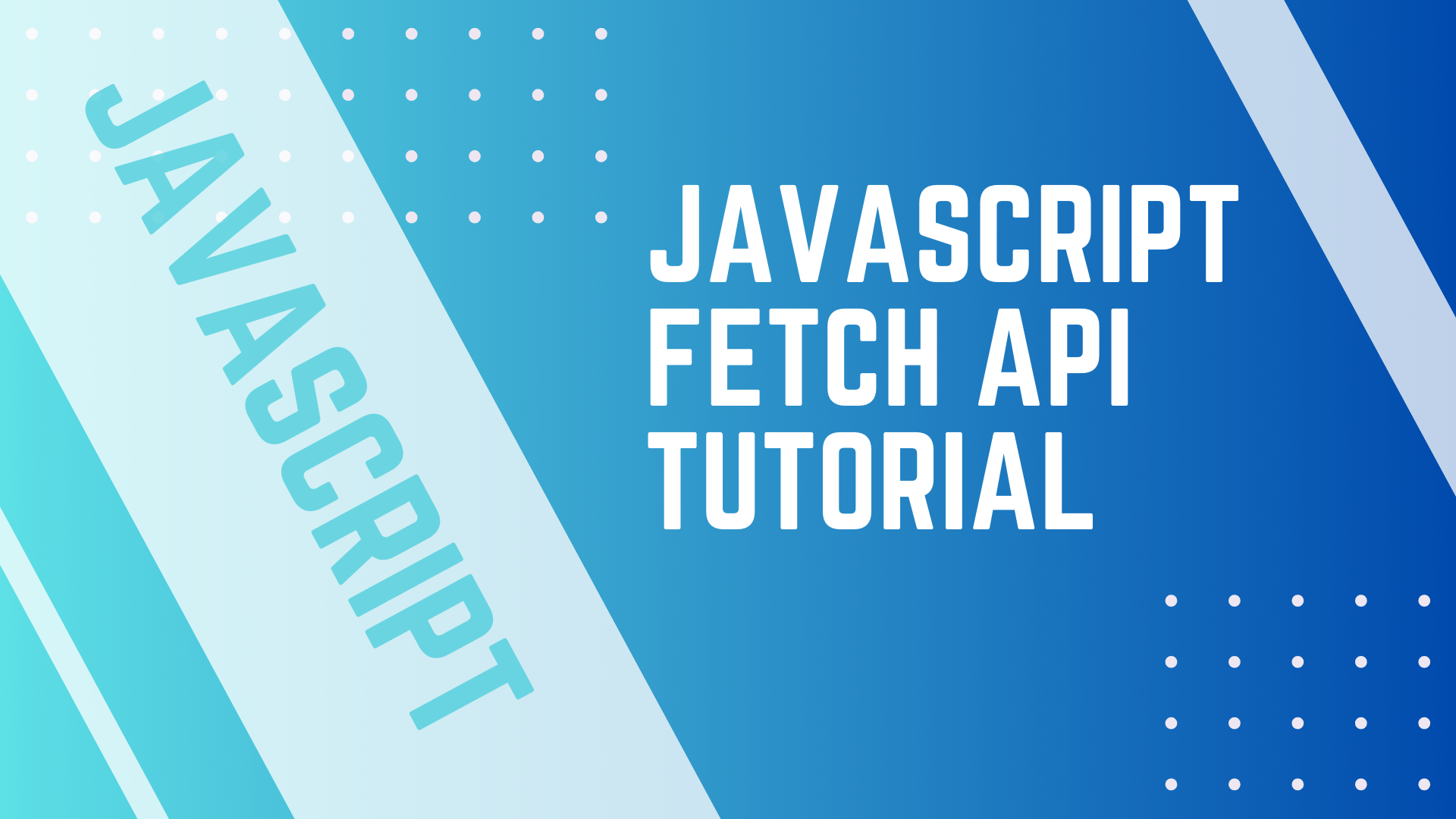JavaScript Fetch API in Minutes!
 Shobo Adefowope
Shobo Adefowope
Introduction:
The Fetch API is a powerful JavaScript tool used to interact with Web APIs.
Learn how to make GET, POST, PUT, PATCH, and DELETE requests.
This tutorial also covers async/await with Fetch and handling API responses.
Video Tutorial - YouTube
How the Fetch API Works:
The
fetch()function takes:A URL (required).
An options object (optional), where you define request method, headers, and body.
It returns a Promise, allowing you to handle responses with
.then()and errors with.catch().
Example:
fetch('<Your URL>')
.then((response) => {
// Handle success
})
.catch((error) => {
// Handle error
})
Sending Requests:
1. GET Request:
- Used to fetch data from an API.
Example:
fetch('https://jsonplaceholder.typicode.com/users/1')
.then((response) => response.json())
.then((data) => console.log(data))
- Converts the response to JSON using
.json()and logs user data likenameandemail.
2. POST Request:
- Can be used to send data to an API (e.g., creating a new user).
To send a "POST" request using fetch, you need to define the second argument as an options object containing the following:
Method: Set the method property to "POST".
Headers: Include a Content-Type header set to "application/json".
Body: Use JSON.stringify() to convert the data you want to send into JSON format and assign it to the body property.
fetch('https://jsonplaceholder.typicode.com/users', {
method: 'POST',
headers: { 'Content-Type': 'application/json' },
body: JSON.stringify({ name: 'John', email: 'john@example.com' }),
})
.then((response) => response.json())
.then((data) => console.log(data))
3. PUT Request:
Replaces existing data or creates new data.
Similar to POST, but used to overwrite resources.
Example:
fetch('https://jsonplaceholder.typicode.com/users/1', {
method: 'PUT',
headers: { 'Content-Type': 'application/json' },
body: JSON.stringify({ name: 'Jane', email: 'jane@example.com' }),
})
.then((response) => response.json())
.then((data) => console.log(data))
4. PATCH Request:
Partially updates data for a specific resource.
To update an existing user's name, you can use the PATCH.
Example:
fetch('https://jsonplaceholder.typicode.com/users/1', {
method: 'PATCH',
headers: { 'Content-Type': 'application/json' },
body: JSON.stringify({ name: 'Jane' }),
})
.then((response) => response.json())
.then((data) => console.log(data))
5. DELETE Request:
Removes a resource permanently.
To run a DELETE request with Fetch, you only need to specify the URL for the resource to delete and the method: 'DELETE' property as follows: Example:
fetch('https://jsonplaceholder.typicode.com/users/1', {
method: 'DELETE',
}).then((response) => console.log('Deleted:', response))
Video Tutorial - YouTube
Difference Between PUT and PATCH Methods
The PUT method replaces the entire resource with the updated data, while the PATCH method modifies only the specified fields in the resource.
Use
PUTfor complete updates.Use
PATCHfor partial updates.
Using Async/Await with Fetch:
- Async/await simplifies working with Promises:
async function fetchData() {
try {
const response = await fetch('https://jsonplaceholder.typicode.com/users/2')
const data = await response.json()
console.log(data)
} catch (error) {
console.log(error)
}
}
fetchData()
Using Fetch API to Display Data in HTML
Here’s an example that demonstrates fetching and displaying user details on a webpage:
<!DOCTYPE html>
<html lang="en">
<head>
<meta charset="UTF-8" />
<meta name="viewport" content="width=device-width, initial-scale=1.0" />
<title>Fetch API Example</title>
</head>
<body>
<h1>User Information</h1>
<div id="user-info">
<p id="user-name">Name: Loading...</p>
<p id="user-email">Email: Loading...</p>
</div>
<script>
// Fetch user data
fetch('https://jsonplaceholder.typicode.com/users/1')
.then((response) => response.json())
.then((data) => {
document.getElementById(
'user-name'
).textContent = `Name: ${data.name}`
document.getElementById(
'user-email'
).textContent = `Email: ${data.email}`
})
.catch((error) => console.error('Error:', error))
</script>
</body>
</html>
Tips for Working with APIs:
Always check the API documentation for required request methods, headers, and formats.
Understand whether the API returns JSON, arrays, or other data structures.
Practice with free APIs like
https://jsonplaceholder.typicode.com.
Conclusion:
The Fetch API is versatile for making HTTP requests in JavaScript.
Use
.then()/.catch()or async/await for handling responses.Master GET, POST, PUT, PATCH, and DELETE to interact with any API effectively.
Subscribe to my newsletter
Read articles from Shobo Adefowope directly inside your inbox. Subscribe to the newsletter, and don't miss out.
Written by

Shobo Adefowope
Shobo Adefowope
Taiwo is a passionate Website developer and a Technical writer with 2 years of experience building responsive and user-friendly web applications. He specializes in HTML, CSS, JavaScript, and various front-end frameworks like React, Nextjs, WordPress and WooCommerce. He uses his technical knowledge to create clear and concise documentation and tutorials that help developers and end-users understand complex systems and processes